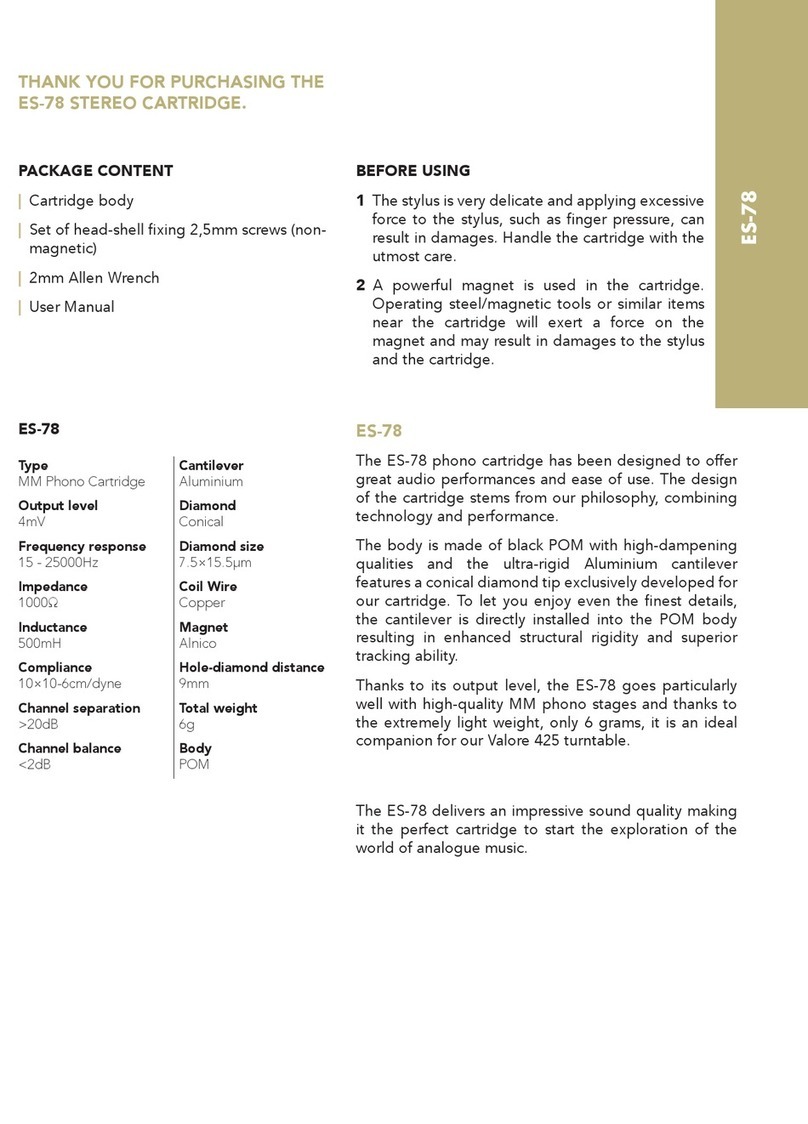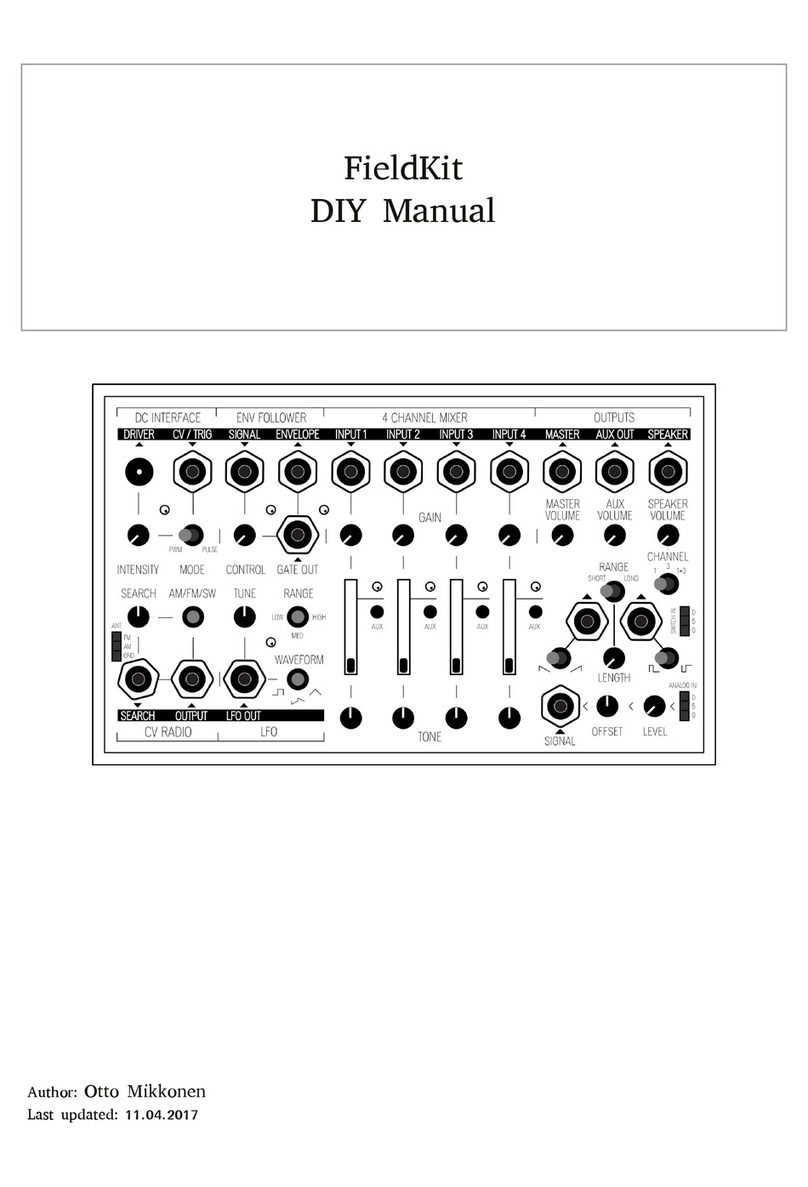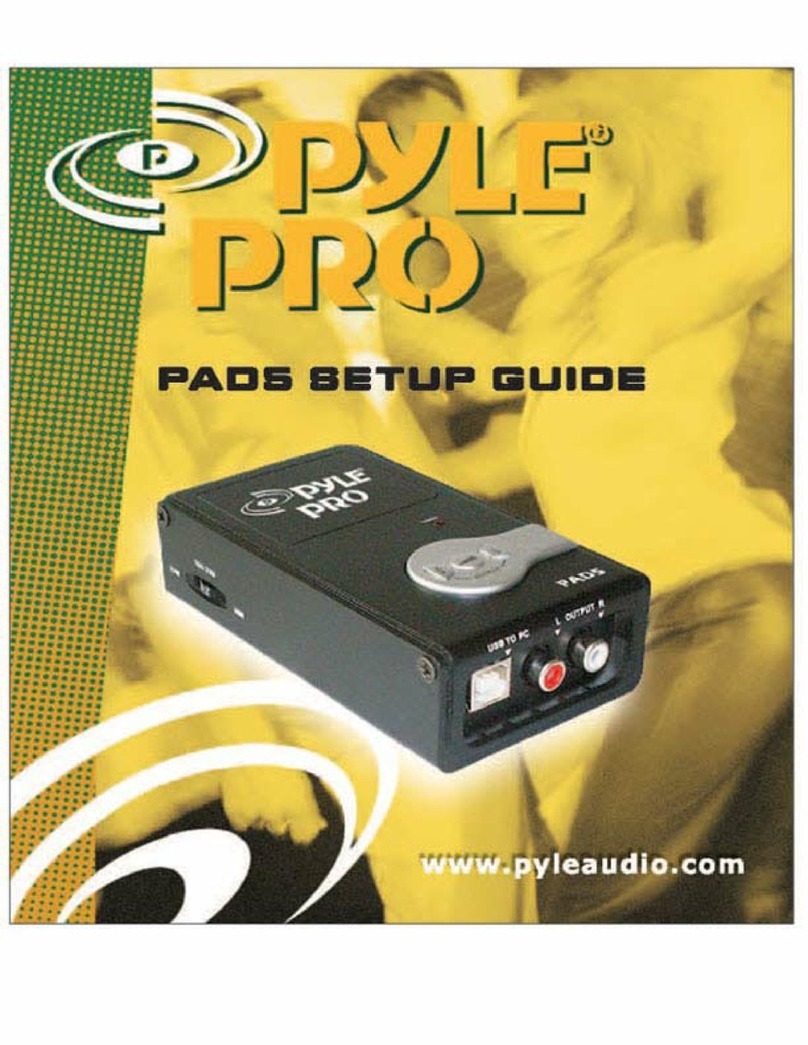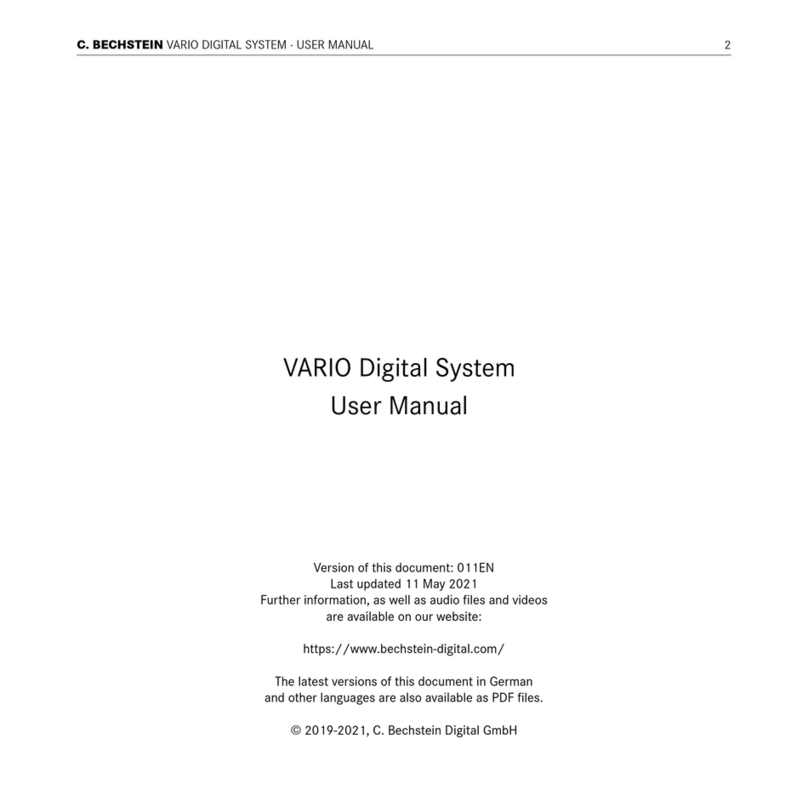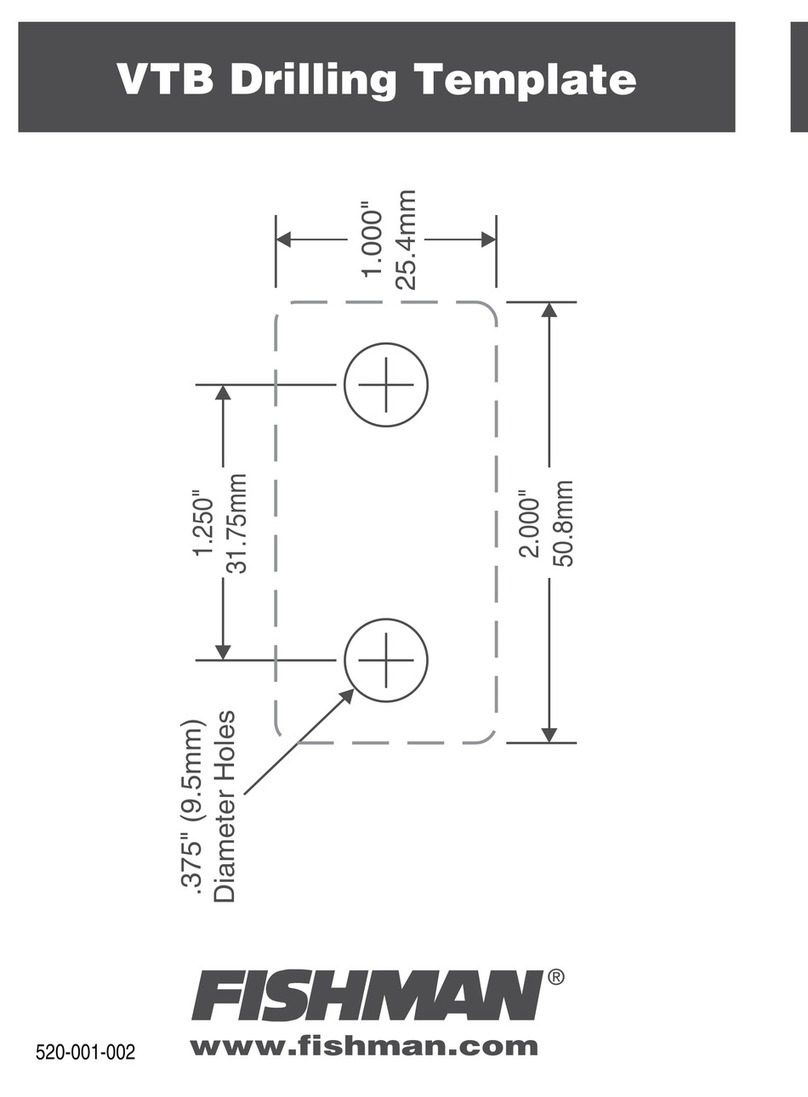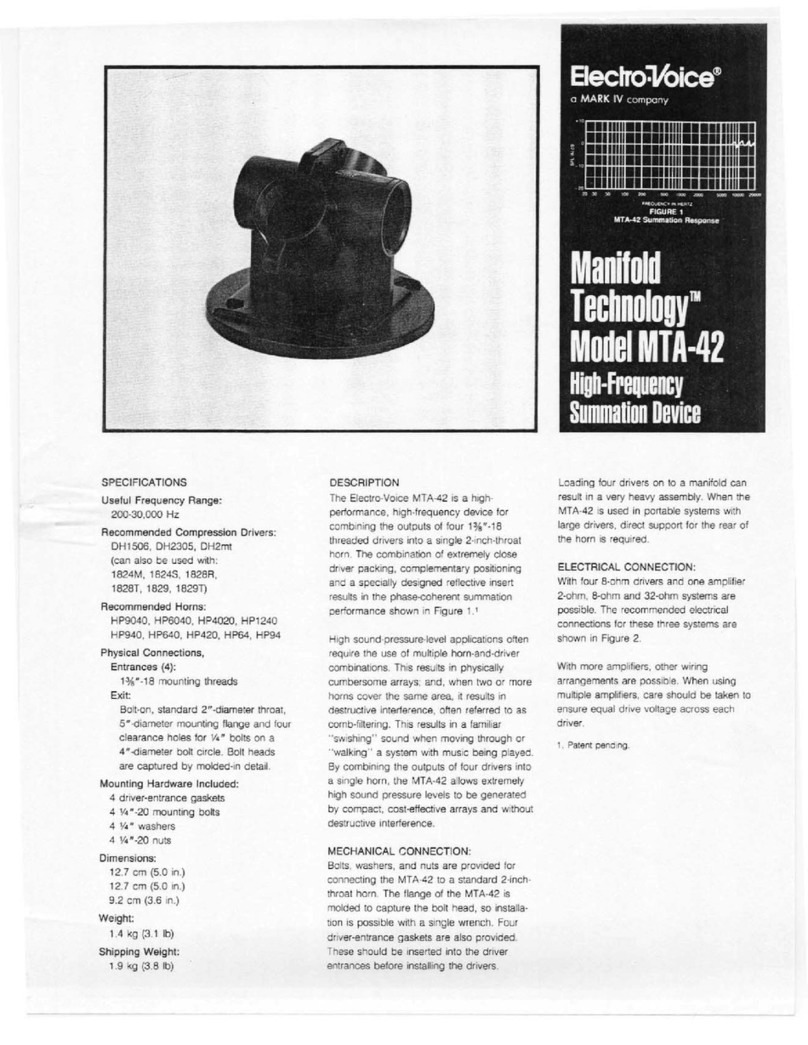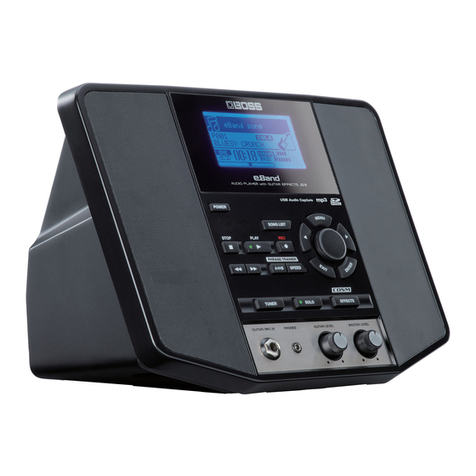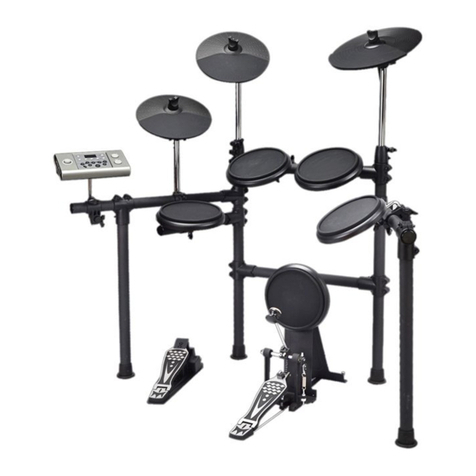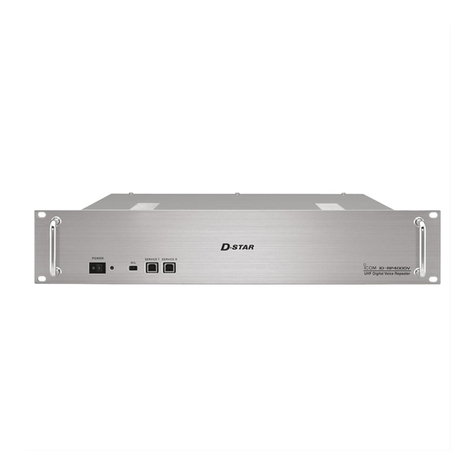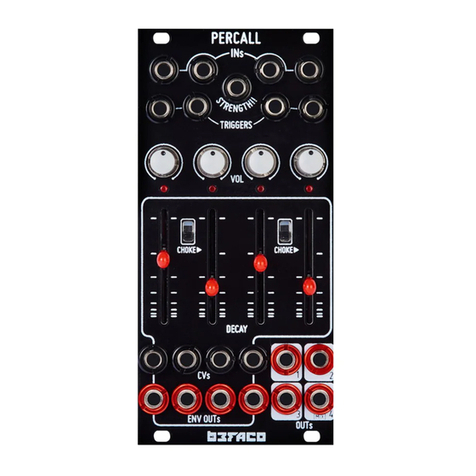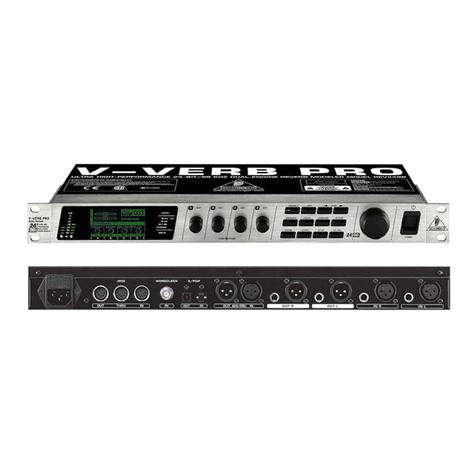JBL VTX Series User manual

VTX A12 | Rigging Manual
GENERAL INFORMATION
VTX A12 - Rigging Manual
Document Number: 1000297495
Version: D - EN
Distribution Date: November 25, 2020
Copyright © 2020 by HARMAN International; all rights reserved
JBL PROFESSIONAL
8500 Balboa Blvd
Northridge, CA 91329
USA

VTX A12 | Rigging Manual
Thank you for purchasing JBL VTX Series products
In more than 75 years of JBL innovations, the VTX Series stands apart as a milestone in the practical application of cre-
ative engineering. VTX products herald the next generation in line array loudspeaker systems: a new era in performance,
system integration and user friendliness. VTX products draw on multiple JBL patents in driver, waveguide, and suspension
technology, as well as custom amplification, DSP, control, and system management designs created in collaboration with
HARMAN Professional sister companies.
VTX loudspeakers marry custom transducer design and in-house manufacture, breakthrough technologies, and a com-
prehensive system approach to deliver a premium experience for all who come into contact with it, from the FOH mixing
engineer to the systems engineer, rigger, road crew, warehouse manager, and, of course, the audience. Designed for
operators of portable and fixed systems alike, the VTX Series features JBL’s legendary sound quality coupled with expert
support and advanced tools that enable optimal specification, configuration, and operation of VTX systems in any venue,
anywhere in the world. The VTX Series delivers a comprehensive solution: the finest sound quality available, plus efficient
and intuitive setup, tuning, networking, and control.

VTX A12 | Rigging Manual
TABLE OF CONTENTS
1 - DECLARATION OF CONFORMITY ...........................................................................7
2 - SAFETY .................................................................................................8
2.1 Safety Instructions ....................................................................................8
2.2 General Hardware Information ..........................................................................8
2.3 Attachment to Structures ...............................................................................8
2.4 Important Safety Warning ..............................................................................9
2.5 Are You New to Rigging? ..............................................................................9
2.6 Inspection and Maintenance ............................................................................9
2.7 Symbols ...........................................................................................10
3 - MECHANICAL LIMITS ....................................................................................11
3.1 Suspended Array Limits ...............................................................................11
3.2 Ground Stack Array Limits .............................................................................11
4 - SYSTEM COMPONENTS .................................................................................12
5 - SOFTWARE.............................................................................................13
5.1 Line Array Calculator 3TM ................................................................................................13
5.2 Array LinkTM ........................................................................................14
5.3 Ground-Stacked Arrays in LAC-3 .......................................................................15
6 - VTX A12 RIGGING SYSTEM OVERVIEW .....................................................................16
6.1 A12 Rigging Closeup .................................................................................16
6.2 VTX A12 - Angle Lock Mechanism ......................................................................17
6.3 VTX A12 - Angle Selection ............................................................................18
7 - A12 VT AND TRANSPORTATION ...........................................................................19
7.1 Installing VTX A12 Cabinets on a VTX A12 VT ..............................................................19
7.2 Installing the VT-Top on the VTX A12 VT ..................................................................21
7.3 Storing the VTX A12 VT ...............................................................................22
7.4 Stacking the VTX A12 VT with the VT-TOP ................................................................23
7.5 Stacking the VTX A12 VT ..............................................................................24
7.6 Truck Packing Dimensions .............................................................................25
8 - VTX A12 AF ARRAY FRAME AND EB EXTENSION BAR .........................................................26
8.1 Array Frame Overview ................................................................................26
8.2 Extension Bar Overview ...............................................................................27
8.3 Attaching the Extension Bar............................................................................28
8.4 Extension Bar Attachment Options ......................................................................29
8.5 Extension Bar Storage Positions ........................................................................31

VTX A12 | Rigging Manual
8.6 Extension Bar and Frame Orientation ....................................................................32
8.7 Using Dual Extension Bars.............................................................................33
8.8 Installing the Laser Bracket ............................................................................34
8.9 Extension Bar Use Cases..............................................................................35
8.10 Attaching the Array Frame ............................................................................36
9 - DEPLOYING A12 SYSTEMS ...............................................................................37
9.1 Preselect the Angles..................................................................................37
9.2 Suspend the First Stack ...............................................................................38
9.3 Attach the Next Stack ................................................................................39
9.4 Repeat Until Completed...............................................................................41
10 - DISASSEMBLING AN A12 ARRAY .........................................................................42
10.1 Open the Angle Locks and Attach the VT ................................................................42
10.2 Close the Angle Locks and Move Pins to Storage..........................................................43
10.3 Repeat Steps to Disconnect the Next Four Cabinets .......................................................44
10.4 Repeat Steps to Disassemble the Array .................................................................45
11 - THE VTX A12 SB SUSPENSION BAR . . . . . . . . . . . . . . . . . . . . . . . . . . . . . . . . . . . . . . . . . . . . . . . . . . . . . . . . . . . . . . . . . . . . . . . 46
11.1 Suspension Bar Overview ....................................................................................46
11.2 Suspension Bar Attachment Tabs ..............................................................................46
11.3 VTX A12 SB for Pull-Back ...........................................................................47
11.4 VTX A12 SB as a Frame and Pull-Back. . . . . . . . . . . . . . . . . . . . . . . . . . . . . . . . . . . . . . . . . . . . . . . . . . . . . . . . . . . . . . . . . . 48
11.5 When Do I Need a Pull-Back?.........................................................................49
11.6 Using a Single VTX A12 SB ...........................................................................50
11.7 When Can I Use the SB as a Frame?....................................................................51
12 - THE VTX DELTA PLATE ..................................................................................52
12.1 Using the VTX Delta Plate ............................................................................52
13 - GROUND STACKING THE VTX A12 ........................................................................53
13.1 VTX A12 VT GND Overview ...........................................................................53
13.2 Angle Selection Mechanism...........................................................................54
13.3 VTX A12 VT GND Parts ..............................................................................55
13.4 Building a Ground Stack .............................................................................56
13.5 Disassembling the Ground Stack.......................................................................59
13.6 Ground Stack Limits.................................................................................62
14 - THE VTX A12 BASE PLATE ...............................................................................63
14.1 Base Plate Overview ................................................................................63
14.2 Storage Configuration ...............................................................................64
14.3 Angle Selection Plates ...............................................................................64

VTX A12 | Rigging Manual
14.4 Assembling Ground-Stacked Arrays ....................................................................65
14.5 A12 Base Plate Examples ............................................................................68
14.6 Attaching the Base Plate onto a Structure................................................................69
15 - SPECIFICATIONS .......................................................................................70
15.1 VTX A12 AF .......................................................................................70
15.2 VTX A12 AF EB.....................................................................................71
15.3 VTX A12 SB .......................................................................................72
15.4 VTX Delta .........................................................................................73
15.5 VTX A12 VT .......................................................................................74
15.6 VTX A12 VT GND ...................................................................................75
15.7 VTX A12 BP .......................................................................................76
16 - CONTACT INFORMATION ................................................................................77

7
VTX A12 | Rigging Manual
1 - DECLARATION OF CONFORMITY
Frank Lacelle
Compliance Manager - Harman International
BRAND: JBL Professional
FAMILY NAME: VTX A12 loudspeakers and suspension accessories
• VTX A12
• VTX A12 AF
• VTX A12 AF EB
• VTX A12 SB
• VTX A12 VT GND
• VTX DELTA
MODEL NAMES:
We, HARMAN International, declare under our sole responsibility that the product, to which this declaration relates, is in conformity
with the following standards:
STANDARD DESCRIPTION TEST AGENCY
2006/42/EC
MACHINERY DIRECTIVE
Applies to machinery and lays down essential
health and safety requirements.
ISO12100
Tested at JBL Professional
2014/35/EC
LOW VOLTAGE DIRECTIVE
Applies to loudspeaker and lays down essential
health and safety requirements.
EN60065
Tested at JBL Professional
• VTX A12W
• VTX A12 VT
• VTX A12 BP

8
VTX A12 | Rigging Manual
2 - SAFETY
2.1 SAFETY INSTRUCTIONS
1. Read these instructions.
2. Keep these instructions.
3. Heed all warnings.
4. Follow all instructions.
5. Do not expose the product to direct rain or sea spray.
6. Clean only with a dry cloth.
7. Do not install near any heat sources such as radiators, heat registers, stoves, or other apparatus that produce heat.
8. Only use attachments/accessories specified by the manufacturer.
9. Use only with a cart, stand, tripod, bracket, or table specified by the manufacturer or sold with the apparatus. When a cart is used,
use caution when moving the cart/apparatus combination to avoid injury from tip-over.
10. Refer all servicing to qualified service personnel. Servicing is required when the apparatus has been damaged in any way, such as if
liquid has been spilled or objects have fallen into the apparatus, or if the apparatus has been exposed to rain or moisture, does not
operate normally, or has been dropped.
11. Contact JBL Professional for advanced servicing issues.
12. CAUTION - DO NOT PERFORM ANY SERVICING UNLESS YOU ARE QUALIFIED TO DO SO.
13. Prolonged exposure to excessive SPL can cause hearing damage. The loudspeaker is easily capable of generating sound pressure
levels (SPL) sufficient to cause permanent hearing damage to performers, production crew, and audience members. Caution should
be taken to avoid prolonged exposure to SPL in excess of 90 dB.
14. Read the System Rigging Manual before installation and use of the product.
2.2 GENERAL HARDWARE INFORMATION
Any hardware used in an overhead suspension application must be load rated for the intended use. Generally, this type of hardware
is available from rigging supply houses, industrial supply catalogs, and specialized rigging distributors. Local hardware stores do not
usually stock these products. Compliant hardware will be referenced with a working load limit (WLL) and a traceability code.
2.3 ATTACHMENT TO STRUCTURES
A licensed Professional Engineer must approve the placement and method of attachment to the structure prior to the installation of any
overhead object. The following performance standards should be provided to the Professional Engineer for design purposes: Uniform
Building Code as applicable, Municipal Building Code as applicable, and Seismic Code as applicable. The installation of the hardware
and method of attachment must be carried out in the manner specified by the Professional Engineer. Improper installation may result in
damage, injury, or death.

9
VTX A12 | Rigging Manual
2.5 ARE YOU NEW TO RIGGING?
If you are new to rigging, you should:
• Know the rules for safe rigging.
• Attend a safe rigging seminar.
• Meet and establish a relationship with a licensed mechanical or structural engineer. Get in the habit of asking them questions in-
stead of assuming their answers. Learn from what they tell you.
• Research and understand the codes, practices and requirements of the venues where you intend to operate your sound system.
2.4 IMPORTANT SAFETY WARNING
The information in this section has been assembled from recognized engineering data and is intended for informational purposes only.
None of the information in this section should be used without first obtaining competent advice with respect to applicability to a given
circumstance. None of the information presented herein is intended as a representation or warranty on the part of JBL. Anyone making
use of this information assumes all liability arising from such use.
All information presented herein is based upon materials and practices common to North America and may not directly apply to other
countries because of differing material dimensions, specifications, and/or local regulations. Users in other countries should consult with
appropriate engineering and regulatory authorities for specific guidelines.
Correct use of all included hardware is required for secure system suspension. Careful calculations should always be performed to
ensure that all components are used within their working load limits before the array is suspended. Never exceed the maximum recom-
mended load ratings.
Before suspending any speaker system, always inspect all components (enclosure, rigging frames, pins, eyebolts, track fittings, etc.) for
cracks, deformations, corrosion, or missing/loose/damaged parts that could reduce strength and safety of the array. Do not suspend
the speaker until the proper corrective action has been taken. Use only load-rated hardware when suspending JBL suspendable loud-
speaker models.
2.6 INSPECTION AND MAINTENANCE
Suspension systems are comprised of mechanical devices and, as such, require regular inspection and routine maintenance to ensure
proper functionality. Before suspending or pole mounting any speaker system, always inspect all components (enclosure, suspension
frames or brackets, pins, eyebolts, etc.) for cracks, deformations, corrosion, or missing/loose/damaged parts that could reduce strength
and safety of the array. Do not suspend or pole mount a speaker until the proper corrective action has been taken.
Installed systems should be inspected at least once a year. The inspection must include a visual survey of all corners and load-bearing
surfaces for signs of cracking, water damage, delamination, or any other condition that may decrease the strength of the loudspeaker
enclosure.
Accessory suspension hardware provided with or for VTX systems must be inspected for fatigue at least once a year or as required by
local ordinance. The inspection must include a visual survey of the material for signs of corrosion, bending, or any other condition that
may decrease the strength of the fastener. Additionally, any eyebolts must be checked for possible spin-out of the enclosure.
For all other hardware and fittings, refer to the hardware manufacturer’s inspection and maintenance guidelines for process.

10
VTX A12 | Rigging Manual
2.7 SYMBOLS
The following symbols are used in this document:
CAUTION: This symbol gives notice of a potential risk of harm to the individual or the equipment. Instruction
marked with this symbol must be strictly followed.
TIP: This symbol gives notice of helpful, relevant information about the topic.
INSTRUCTIONS: This symbol gives notice of instructions that must be followed for proper installation and use of
the product.
TOOLS REQUIRED: This symbol gives notice of tools that must be used for proper installation and use of the
product.
JBL is not responsible for the application of its products for any purpose or the misuse of this information for any purpose. Furthermore,
JBL is not responsible for the abuse of its products caused by avoiding compliance with inspection and maintenance procedures or
any other abuse.
Prior to suspending the system, an expert, trained and experienced in suspending speaker systems, should inspect all parts and com-
ponents.

11
VTX A12 | Rigging Manual
3 - MECHANICAL LIMITS
The VTX A12 suspension system and accessories comply with the 2006/42/EC Machinery Directive and have been designed following
the guidelines of DGUV regulation 17 (BGV-C1) for a minimum safety factor of 4:1. Minimum safety factor requirements for suspended
arrays are often set by local regulations. Use JBL Line Array Calculator 3TM software (LAC-3) to check mechanical limits and ensure
compliance with local regulations. ANSI Standard E1.8 (Entertainment Technology Loudspeaker Enclosures Intended for Overhead Sus-
pension), Section 5.3.4, specifies a minimum safety factor of 5:1. If compliance with the ANSI standard is needed, make sure that the
array design produces a minimum safety factor of 5:1.
ARRAY FRAME NOTES SAFE LIMIT MAXIMUM LIMIT
VTX A12 AF Extension Bar set to the rear position (12) A12 (24) A12
VTX A12 AF Extension Bar set to the front position (8) A12 (16) A12
VTX A12 AF Reverse Frame and Extension Bar set to the front position (12) A12 (24) A12
VTX A12 SB Suspension Bar used as an Array Frame (18) A12 (18) A12
ARRAY FRAME NOTES SAFE LIMIT MAXIMUM LIMIT
VTX A12 VT + GND Using VTX A12 VT with VTX A12 VT GND outriggers (4) A12 (6) A12
VTX A12 BP Base plate for ground stacking A12 systems (2) A12 (6) A12
3.1 SUSPENDED ARRAY LIMITS
3.2 GROUND STACK ARRAY LIMITS
TIPS:
• The VTX A12 and VTX A12W share the same weight and physical size.
• The names “VTX A12” and “VTX A12W” are used interchangeably throughout this document.
TERMINOLOGY:
Safe Limit: The safe limit provides the number of cabinets that can be used in an array while maintaining a safety factor of 4:1 or higher.
The safety factor of an array is determined by the number of cabinets, the array shape, and the overall array angle. An array constructed
within the safe limit will always yield a safety factor greater than 4:1 regardless of array parameters and conditions. Ground-stacked ar-
rays within the safe limit are stable under normal conditions. Designs exceeding the safe limit and up to the maximum limit, are possible,
but the Line Array Calculator 3TM software should be used to check mechanical safety for the given configuration.
Maximum Limit: Arrays larger than the maximum limit are not allowable under any conditions.
NOTES:
• When the safe limit and maximum limit are the same, the array always produces a safety factor of 4:1 or higher.
• Safe and maximum limits are only applicable to the specified accessory (i.e. base plate or array frame). When several accessories
are combined (for example, ground-stacked arrays with a base plate and subwoofers underneath), the design should always be
evaluated and checked with LAC-3.
• LAC-3 will not allow array designs below the 4:1 minimum safety factor.

12
VTX A12 | Rigging Manual
4 - SYSTEM COMPONENTS
VTX A12 AF EB | Extension Bar
VTX A12 VT CVR | Cover
VTX A12 VT | Vertical Transporter VTX A12 VT GND | Ground Stack
VTX A12 SB | Suspension Bar VTX Delta | Delta Plate
CAUTION: Always use components and accessories specified and approved by JBL Professional. When a cart is
used, use caution when moving the cart to avoid injury from tip-over.
VTX A12 BP | Base Plate
VTX A12 AF | Array FrameVTX A12 / VTX A12W

13
VTX A12 | Rigging Manual
5 - SOFTWARE
5.1 LINE ARRAY CALCULATOR 3TM
Line Array Calculator 3 acoustical prediction software is used for the design and mechanical validation of VTX Series line array systems.
Using LAC-3 is a three-step process. First, venue dimensions are defined using either X/Y/Z coordinates or the fast distance/angle
method. Second, array configurations are built from VTX loudspeaker models. Third, virtual measurement microphones and a suite of
built-in DSP functions are applied to make predictions of the system’s coverage and the linearity that will be delivered by the defined
array configuration in the specified space. Loudspeaker quantities and models, splay angles, and array aiming can be modified until
prediction shows that the desired coverage is attained throughout the venue. The built-in coverage-and-delay calculator determines
subwoofer delay values for electronic delay steering (EDS) that achieve optimal low frequency coverage.
Beyond acoustical predictions, LAC-3 validates the mechanical properties of arrays and selected JBL accessories. Configuration limits
are calculated in real time, for either suspended or ground-stacked arrays, based on array parameters such as the number of cabinets,
cabinet-to-cabinet splay angles, overall array aiming, and selected accessories. In the case of suspended arrays, a safety factor is cal-
culated to aid in designing systems that conform to local regulations. Warnings and error messages notify the user when an array or a
specific accessory is outside safe working limits. For ground-stacked arrays, a tipping factor calculated from a complex set of variables
suggests whether an array design is likely to be stable, potentially unstable, or unsafe. Array statistics like array size, depth, and weight
are also calculated, and a PDF report facilitates system deployment. Mechanical data can be transferred to JBL’s Array LinkTM app run-
ning on an iOS® or AndroidTM mobile phone using a QR code, with no need for internet connectivity. All relevant rigging information and
options are presented in an easy-to-understand layout.
CAUTION: All VTX systems should be designed and validated using the LAC-3 software application. This is the only
way to ensure that safe mechanical conditions are met for any given configuration.

14
VTX A12 | Rigging Manual
5.2 ARRAY LINKTM
JBL Array Link is a mobile companion app that works with LAC-3 software to assist technicians deploying VTX Series systems in the
field. Array Link uses a QR code to directly transfer mechanical data in real time from an array design created in LAC-3 to a mobile phone
running iOS or Android. All relevant rigging information and options are presented in an easy-to-understand layout. The application can
be downloaded free from the Apple App Store or Google Play Store.
Once the system designer or lead tech computes the angles for each hang in LAC-3, every member of the crew can get the correct
information for angles, attachment points, trim height, etc., either by scanning the QR code from LAC-3 directly with their device, or
getting the data from a copy shared on another user’s device. When all users onsite have the configuration data, arrays can be deployed
quickly and efficiently.

15
VTX A12 | Rigging Manual
5.3 GROUND-STACKED ARRAYS IN LAC-3
Line Array Calculator version 3.5.0 or later includes mechanical safety checks for ground-stacked arrays. The software takes into con-
sideration several variables that can affect the stability of an array, including outside factors such as someone pushing on an array.
Based on this data, LAC-3 generates a safety assessment factor and notifies the user of potential mechanical or stability problems.
Errors and warnings generated fall into one of the following categories:
No errors or messages
In this case, the array is stable under normal conditions and can be used as is. The array
also complies with the mechanical limits set by JBL for the speakers and selected acces-
sories.
WARNING: Stability Hazard! - Stack Could Become Unstable - Secure to Ground
This message is an alert that the array is potentially unstable and a tipping hazard condition
has been detected. The user is responsible for securing the array to the ground, stage, or
other structure that can provide additional support and is rated for the weight of the array.
This message may also be warning of external factors that can influence stability, such as
someone accidentally pushing the array.
Configuration exceeds the maximum number of boxes allowed
This message is presented when the specified array design exceeds the mechanical limits
set by the JBL team for the speakers or selected accessories. Array designs that trigger this
message should not be used under any conditions, as they can lead to hardware damage
and/or injury.
Center of Gravity
Invalid CG Location
This message is presented when the Center of Gravity of an array design exceeds the foot-
print of the selected accessory. Array designs that trigger this message should not be used
under any conditions, as they can lead to hardware damage and/or injury.

16
VTX A12 | Rigging Manual
6 - VTX A12 RIGGING SYSTEM OVERVIEW
VTX A12 cabinets include a next-generation rigging system that is easy to use, simple to understand, and highly accurate. VTX A12
enclosures are transported vertically on carts of four using the VTX A12 VT Vertical Transporter cart system accessory. During trans-
portation, all four cabinets travel collapsed with their angles set to the 10-degree position. Cabinet-to-cabinet splay angle selection is
done while the system is still on the ground, simply by moving the angle selection quick release pin (QRP) to the desired position. When
speakers are lifted off a VTX A12 VT cart, an automatic Angle Lock mechanism engages to secure the cabinets to the selected position.
The cabinets maintain their splay positions until the user releases the Angle Lock mechanism, at which point the cabinets can collapse
again and be stored on the cart.
NOTE: For the purpose of this manual, the names “A12” and “A12W” will be used interchangeably.
6.1 A12 RIGGING CLOSEUP
FRONT CONNECTION POINT
REAR CONNECTION POINT
FRONT QRP
ANGLE SELECTION
REAR QRP
LOCK RELEASE BUTTON
ANGLE LOCK MECHANISM

17
VTX A12 | Rigging Manual
6.2 VTX A12 - ANGLE LOCK MECHANISM
The VTX A12 includes an innovative Angle Lock mechanism that automatically engages when the cabinets are suspended and reach
their desired angle positions. The Angle Lock mechanism consists of two main parts, the red Locking lever and the black Lock Release
button.
The system is locked when the red Locking lever is recessed into
the cabinet. When the cabinets are suspended, a sequential lock-
ing sound is heard, indicating that the system has reached its final
position and is locked. The system remains locked until the Angle
Lock mechanism has been released.
LOCKED POSITION
To de-rig the system, the Angle Lock mechanism is released so
that the cabinets can collapse again and be set on the VTX A12
VT at a 10-degree angle. Press the black Lock Release Button to
unlock the mechanism.
When the black Lock Release button is pressed, the red Locking
lever is released and moves to its unlocked position. The Lock-
ing lever is spring-loaded and maintains its position until the user
manually changes the mode. The Angle Locks are set to their
unlocked position until the cabinets are attached to the VTX A12
VT and collapsed all the way to 10 degrees.
NOTE: The red Angle Lock levers are used to secure the angle
position and prevent the cabinets from taking a different angle
when cabinets are deployed in an array. The red Angle Lock lever
is not load-bearing, and the system is safe even if they are acci-
dentally left in the unlocked position.
UNLOCKED POSITION
LOCKING LEVER RELEASE BUTTON

18
VTX A12 | Rigging Manual
6.3 VTX A12 - ANGLE SELECTION
Each VTX A12 includes an Angle Selection panel on each side that is used for selecting the cabinet-to-cabinet splay angle. The options
are marked in degrees and the panel allows for eleven unique positions ranging from 0.25 degrees to 10 degrees.
VTX A12 ANGLE OPTIONS: 0.25°, 0.5°, 1°, 1.5°, 2°, 2.5°, 3°, 4°, 6°, 8°, 10°
A dedicated quick release pin is used to select an angle. Angles
are selected while the VTX A12 cabinets are on a VTX A12 VT
resting on the ground. When the system is on the ground, the
quick release pins are not under load and can be moved freely to
a desired position.
During transportation, VTX A12 cabinets should always be set to
10 degrees. This ensures that the rigging system is locked, pre-
venting any accidental movement or angle selection.
To select an angle, remove the quick release pins from the stor-
age position (10°) and set them to the desired position. After the
array has been lifted from the ground, the weight is shifted to the
quick release pins and selecting an angle is no longer an option.
CAUTION: Every quick release pin on a VTX A12 system must always be placed in a hole. Do not suspend a VTX
A12 system if any pins are hanging freely.

19
VTX A12 | Rigging Manual
7 - A12 VT AND TRANSPORTATION
The VTX A12 VT Vertical Transporter is used to transport VTX A12 cabinets in groups of four. When stacked on the VTX A12 VT, all four
cabinets are set to the 10-degree (STORAGE) position, which secures the rigging system for transportation. The optional VTX A12 VT
CVR Cover can be used for additional protection.
7.1 INSTALLING VTX A12 CABINETS ON A VTX A12 VT
VTX A12 cabinets should be installed on the VTX A12 VT one by one starting with the lowermost cabinets.
STEPS:
• Start by installing the first VTX A12 cabinet onto the VTX A12 VT.
• Use the four front and rear A12 quick release pins to secure the cabinet to the VT.
• Set the A12 cabinet to the 10-degree (STORAGE) position and set the red Locking lever to the locked position.
1°
1°
2.5°
2.5°
3°
3°
4°
4°
6°
6°
8°
8°
10°
10°
STORAGE
STORAGE
2°
2°
1.5°
1.5°
.5°
.5°
.25°
.25°
1
2
3
3
1
22

20
VTX A12 | Rigging Manual
1°
1°
2.5°
2.5°
3°
3°
4°
4°
6°
6°
8°
8°
10°
10°
STORAGE
STORAGE
2°
2°
1.5°
1.5°
.5°
.5°
.25°
.25°
STEPS:
• Lower the next A12 cabinet on top of the first enclosure and make sure all four corners are aligned and the rigging arms are
engaged.
• Use the two quick release pins on each side of the A12 cabinet to secure it to the A12 below.
• Set the cabinet side angle to the 10-degree (STORAGE) position and make sure the red Locking lever is in the locked position.
• Repeat this process until all four cabinets are set on the VTX A12 VT.
2
1
2
3
3
1
4
4
Other manuals for VTX Series
12
This manual suits for next models
2
Table of contents
Other JBL Music Equipment manuals





